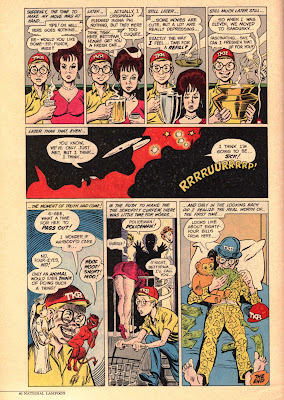
Wednesday, March 12, 2025
The Eternals the Complete Collection

Sunday, March 9, 2025
Book Review: Hobgoblin
'Hobgoblin' is set in the Fall of 1981. As the novel opens, Scott Gardiner and his widowed mother Barbara have taken up residence in the grand estate of Ballycastle, on the Hudson River in New York state. Ballycastle is an impressive monument to egomania. Originally a castle in Ireland, in the 1920s it was dismantled stone by stone, shipped across the Atlantic, and re-erected on the grounds of property owned by an eccentric Irish-born magnate named Fergus O'Cuileannain. A foundation operates Ballycastle as a tourist attraction, and has hired Barbara to be the archivist for the estate.
Scott is a prick, and a fuckup. He's self-centered, arrogant, a mamma's boy, prone to self-pity, has attempted suicide several times, and is preoccupied with Hobgoblin to the point where he interprets the world through the lens of the game; people are judged based on their resemblances to characters from Hobgoblin. In his own mind, Scott sees himself as the ancient Irish hero Brian Boru, his avatar in the game, and Gardiner's real-world struggles are echoes of those Boru has faced in sessions of Hobgoblin.
Nothing of consequence takes place in the first 300 pages of 'Hobgoblin'. Author Coyne is determined to stuff as much padding into the narrative as he possibly can. We get lengthy passages describing the emotional conflicts between Scott and Barbara; Scott's (improbable) romance with his high school classmate, Valerie Dunn; Scott's bullying at the hands of some troglodyte football players; and Barbara's burgeoning romance with the foundation's director, Derek Brennan. There is considerable exposition on the gameplay mechanics of Hobgoblin and RPGs in general (Coyne at one point alludes to TSR founders Gary Gygax and Dave Arenson).
There are all sorts of Ambiguously Spooky Phenomena, associated with what may have been devil-worshipping conducted on the grounds of Ballycastle by O'Cuileannain, popping up now and then to impart a feeble momentum to the narrative.
'Hobgoblin' could have redeemed itself by providing a worthy climax, but the final 40 pages read like a really bad script for a Slasher film: it seems that Scott has persuaded his teachers to allow the high school kids to have a Hobgoblin cosplay party at the castle ! Contrivances are so plentiful that they completely negate the author's efforts to impart a sense of horror and dread to the proceedings.
The verdict ? 'Hobgoblin' is one of greatest duds of the Paperbacks from Hell era, and deserving of a Zero Stars score.

























































